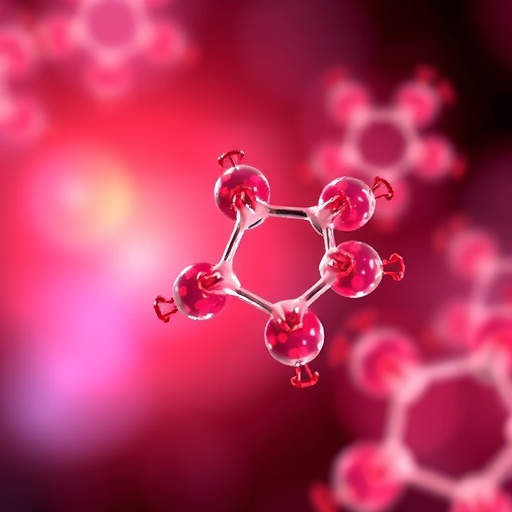Research conducted by Dr. Jyothi Menon and her team at Texas A&M University has unveiled a groundbreaking therapeutic approach that seeks to mitigate the devastating impacts of alcohol-related liver disease (ARLD). This innovative therapy introduces microscopic nanoparticles designed specifically for targeting the liver’s Kupffer cells, thereby aiming to alter the detrimental progression of inflammation and fibrosis commonly associated with chronic alcohol abuse. As the prevalence of liver diseases surges globally, affecting over 1.5 billion individuals and claiming over 52,000 lives annually in the United States alone, the urgency for effective treatments has intensified.
Historically, therapeutic strategies for ARLD have concentrated primarily on two fronts: alcohol cessation and anti-inflammatory medications. However, Dr. Menon’s research departs from conventional methodologies by harnessing the capabilities of uniquely engineered nanoparticles. These particles, diminutive in size to the extent of being a thousand times smaller than a human hair, possess the remarkable ability to infiltrate damaged liver tissues and bind with diseased cells. Such targeted action represents a significant evolution in the potential treatment landscape for those suffering from chronic liver conditions.
The human liver, while inherently resilient, relies heavily on immune cells, particularly Kupffer cells, to maintain its reparative functions. These cells play a pivotal role in fighting infections and fostering anti-inflammatory responses. However, the landscape shifts dramatically in the presence of chronic liver damage, wherein repeated insults lead to a malfunction of the liver’s self-repair mechanisms. Kupffer cells begin to release inflammatory signals, exacerbating the issue and fostering a cycle of harm that can culminate in severe liver dysfunction or even oncogenesis.
Dr. Menon’s nanoparticle system is ingeniously crafted to address this cycle of destruction. By selectively targeting Kupffer cells through specific protein recognition, these nanoparticles evade interaction with other cell types in the liver, ensuring a focused therapeutic action that promotes beneficial responses. Once attached, the nanoparticles stimulate Kupffer cells towards an anti-inflammatory state, counteracting the harmful pro-inflammatory cascade and assisting in the restoration of normal liver function.
What sets this development apart from previous therapeutic efforts is not merely the utilization of nanoparticles but rather the comprehensive formulation that combines multiple functional elements. Initial trials indicated that individual components lacked significant therapeutic efficacy, yet the amalgamation of these elements within a singular nanoparticle system exhibited profound effects. Such a synergistic approach has successfully reduced inflammation and counteracted lipid accumulation within liver tissues—two critical manifestations of metabolic derangements often seen in alcoholic liver disease.
Embarking on this path was not devoid of challenges. As pioneers in this field, Dr. Menon and her researchers navigated a landscape devoid of existing literature or precedents. Their initial breakthroughs—demonstrating the ability of these nanoparticles to home in on Kupffer cells—marked significant milestones in their scientific journey. Such advancements bring hope not only for ARLD patients but open avenues for broader applications in treating various inflammatory diseases across different organ systems.
The versatility inherent in this research cannot be overstated. The nanoparticle design, initially tailored for liver applications, possesses the potential to be adapted for use in addressing inflammation and fibrosis in other vital organs. Should further studies confirm the efficacy of these targeted nanoparticles, it could revolutionize therapeutics within the realm of chronic diseases, expanding treatment horizons substantially.
Dr. Menon’s exploration into nanoparticle-based drug delivery systems thus signifies a transformative epoch in liver disease management. By aiming directly at the source of disease propagation rather than merely ameliorating symptoms, this approach propels us closer to finding sustained solutions for chronic liver ailments and perhaps other inflammation-related disorders. Such progress reflects a beacon of hope for millions suffering from diseases previously deemed intractable, reaffirming science’s commitment to continually seek novel interventions.
In conclusion, recent discoveries surrounding the utilization of Kupffer cell-targeting nanoparticles by researchers at Texas A&M University represent a pivotal advance in the battle against alcohol-related liver disease. As these experimental therapies continue developing, they offer a glimpse into the future of tailored, effective treatments that may alleviate the global burden of chronic liver diseases. The research thus not only enriches our understanding of liver pathophysiology but also exemplifies the potential for innovative cross-disciplinary approaches in biomedical engineering to reshape healthcare paradigms.
Subject of Research: Cells
Article Title: A novel Kupffer cell-targeting nanoparticle system to Mitigate alcohol-associated liver disease
News Publication Date: 9-Aug-2025
Web References: Biomaterials Journal
References: DOI
Image Credits: Texas A&M University
Keywords
Nanoparticles, Liver, Alcohol-related liver disease, Kupffer cells, Biodegradable therapeutics, Inflammation modulation, Chronic liver conditions, Nanotechnology in medicine.




